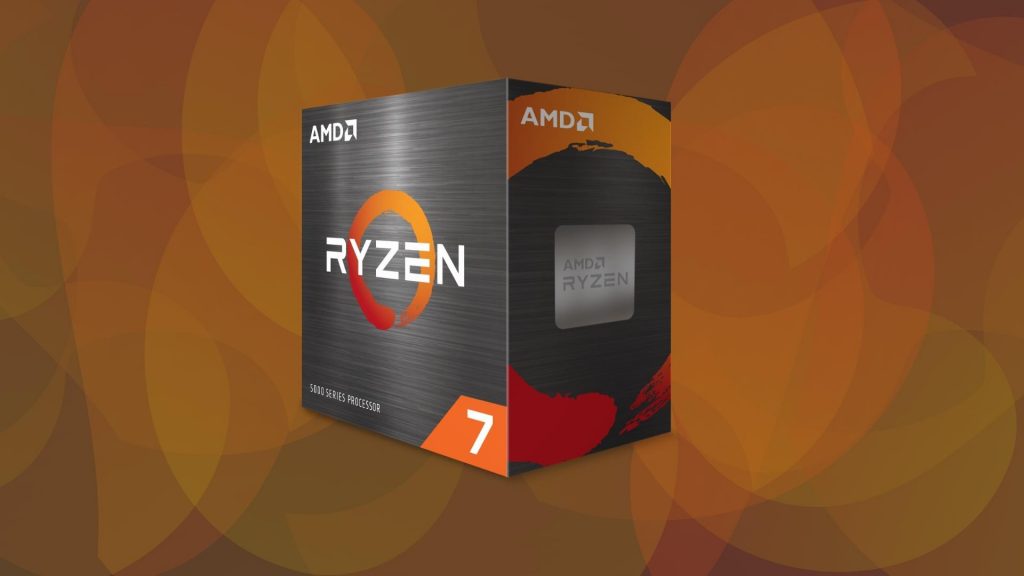AMD has revealed a whole bunch of new processors to launch throughout April headed up by the long-awaited Ryzen 7 5800X3D, which comes alongside fresh models in the 5000 series and some from the 4000 range too.
The 5800X3D is the first processor to employ AMD’s 3D V-cache tech – hence the ‘3D’ in the model name – and it’s the big hitter going up against Intel’s Alder Lake flagship, launching on April 20 priced at $449 (around £340, AU$625).
AMD boasts that it’s a cutting-edge 8-core (16-thread) CPU which offers 15% better gaming performance than current Ryzen champ, the 5900X.
Team Red further benchmarked the 5800X3D across a selection of six games running at Full HD resolution (with high graphics settings), and said that the CPU is faster than Intel’s Core i9-12900K (without providing further details). That’s when both are paired with an RTX 3080, and roughly equivalent components elsewhere (though there was actually more system RAM in the Intel rig).
The other processors launched will be out from April 4, and include the Ryzen 7 5700X, arriving with 8-cores and 16-threads, plus boost up to 4.6GHz with a base clock of 3.4GHz. It’ll retail for $299 (around £230, AU$415).
That’s backed up by the Ryzen 5 5600, a 6-core (12-thread) part with base and boost clocks of 3.5GHz and 4.4GHz respectively, priced at $199 (around £150, AU$276), coming along with the Ryzen 5 5500 which has the same core and thread count, but clocked at 3.6GHz and 4.2GHz. The latter processor also drops the cache from 35MB to 19MB, and the price tag down to $159 (around £121, AU$220).
Those are the launches from the Ryzen 5000 family, but AMD has also floated a trio of new Ryzen 4000 models – the 4600G, 4500 and 4100, which are Zen 2 rather than contemporary Zen 3 processors.
The Ryzen 5 4600G has 6-cores (12-threads) and is clocked at base and boost speeds of 3.7GHz and 4.2GHz, and the Ryzen 5 4500 offers the same core configuration but clocked at 3.6GHz and 4.1GHz. Pricing is $154 (around £118, AU$214) and $129 (around £99, AU$179) respectively.
Bringing up the rear with a $99 price tag (around £76, AU$137) is the Ryzen 3 4100, a quad-core (8-thread) CPU clocked at 3.8GHz with boost to 4GHz. All of these processors have a TDP of 65W, and all of them are bundled with a Wraith Stealth cooler (except for the 5700X which doesn’t have the cooler).
Analysis: Attacking Intel on two fronts – flagship and budget
The emergence of these multiple Ryzen chips is something the rumor mill was spot-on about, and as we commented when this was just speculation, it represents a major salvo of AMD processors being fired at Intel.
The Ryzen 7 5800X3D is an obvious point of excitement, target Intel’s top dog Core i9-12900K, and apparently outdoing Team Blue’s CPU, at least in being the ‘fastest 1080p gaming’ processor – while undercutting by a decent chunk price-wise (Intel’s flagship officially retails from $589, which is £450 / AU$815).
As noted above, AMD didn’t provide any further details on how much faster the 5800X3D is, and as we know with official benchmarking for big reveals like this, the tests picked are bound to be ones that show off the silicon in its best light.
So, with those obvious caveats, we’re looking forward to testing the power of 3D V-cache for real ourselves in the near future, and we won’t know the real score of how the 5800X3D fits into the current CPU landscape until that happens.
Also, bear in mind that Intel isn’t standing still either, and has the 12900KS – a supercharged version of the Alder Lake flagship – in the pipeline and supposedly imminent, or that was the last we heard from the grapevine. But then again, the price of that processor will be even higher than the 12900K, so there’ll be a greater disparity on the value front between the 12900KS and 5800X3D (with gaming performance differences not likely to stack up to that gap).
Away from the high-end, the peppering of more wallet-friendly CPUs from AMD is equally, if not more welcome. The budget end of the market has been neglected by AMD in recent times, so to see fresh options around $150 – like the Ryzen 5 5500 – and moreover models dipping down to the $100 mark – with the Ryzen 4500 and 4100 – is going to be a cause for celebration for those looking at budget PC builds.
Intel has some very compelling cheaper Alder Lake chips in these price brackets, so it’s great to see some competition there – assuming, and that’s the case for all these launches, that AMD can come good on the stock front (and demand doesn’t end up inflating the wallet-friendly pricing).
With so many new chips coming out, and the component shortage still very much being felt, the other major point of interest here will be how much supply Team Red can crank out in these early days. We shall see…
Intel vs AMD: which is best?
